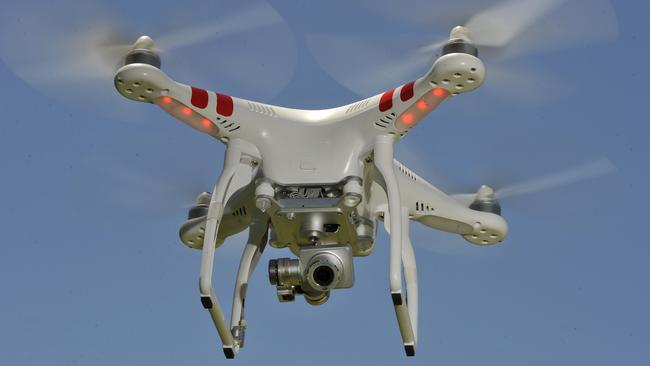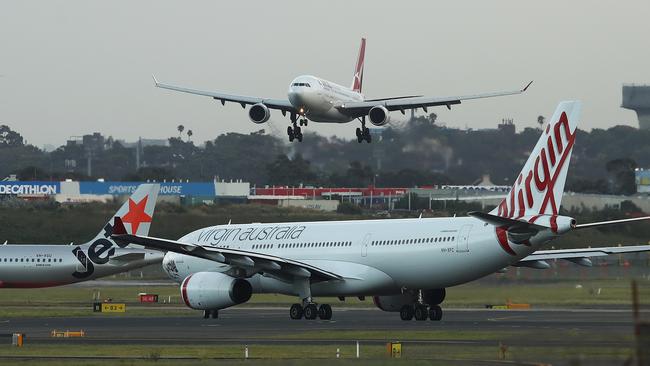Rogue, malicious drones will be electronically hijacked in new trial
The sky over Sydney Airport and Sydney Harbour will be monitored from this week to gauge the threat of “rogue or malicious” drones as part of a new safety scheme which would see a dangerous device electronically hijacked and landed in a safe place.
NSW
Don't miss out on the headlines from NSW. Followed categories will be added to My News.
The sky over Sydney Airport and Sydney Harbour will be monitored from this week to gauge the threat of “rogue or malicious” drones as part of a new safety scheme which would see a dangerous device electronically hijacked and landed in a safe place.
The Israeli technology being trialled by the Civil Aviation Safety Authority (CASA) is capable of triangulating the drone operator’s precise location and control taken over from the rogue pilot.
However, the “passive trial” will not take advantage of the drone disabling hijack technology until CASA has a better understanding of how often drones breach no-fly zones.
Instead, the “Convexum” Israeli counter-drone technology and Chinese “DJI AeroScope” drone tracking instruments will be used to watch drones that fly into protected airspace and log the flight trajectory, drone serial number, and location of the operator.

MORE FROM JACK MORPHET
SYLLABUS SHAKE-UP TO NURTURE HI-TECH STUDENTS
WINTER OLYMPIAN ZALI STEGGALL TO BATTLE ABBOTT
HAY DELIVERED TO DROUGHT-STRICKEN FARMERS
Police have the power under legislation to hack and take control over a drone “in certain circumstances and with the appropriate co-ordination between relevant authorities”, according to a spokesman for federal Minister for Transport Michael McCormack.
In the USA and Europe, Convexum’s counter-drone technology is being used to foil corporate espionage, terror attacks, deliveries of contraband over prison walls, and pirate broadcasts of sporting matches.
Speaking exclusively to The Sunday Telegraph from Tel Aviv, ex-Israeli military intelligence agent and founder of Convexum, Gilad Sahar, said hacking the drones and landing them in a predetermined location was safer than bringing drones down with electronic jamming devices that can interfere with the electronics aboard passenger planes or helicopters.

The Convexum technology, which also prevents drones from taking off inside a protective dome of airspace, can take control of swarms of drones flying into restricted airspace at once.
“We guarantee where the drone will land so there’s no collateral damage to people or property when it’s brought down,” Mr Sahar said.
Aside from preventing another incident similar to Gatwick Airport, where drone sightings grounded 1000 flights between December 19 and 21, Mr Sahar claims his technology will protect Sydney from drones being used in terror attacks.

ISIS has released propaganda videos of rigged off-the-shelf drones hovering over Iraqi tanks and bombing them.
“Drones are at the frontline of terrorism,” Mr Sahar said.
“Drones are an easy-access, low-cost terror tool in the same way it’s easy to access a truck to mow down crowds.”
The world’s largest manufacturer of consumer and commercial drones, DJI, doesn’t make counter-drone technology but it can identify DJI drones’ telemetry data, serial number, takeoff point, and the make and model to determine whether the drone weighs 400g or 24kg.
“To protect an airport, we first need to determine whether there is a drone in the airspace and where it is, without relying on a pilot’s sighting,” Adam Welsh, DJI’s Head of Public Policy said.



